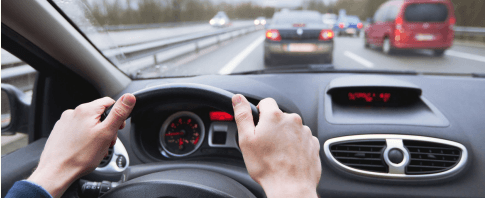
The National Roadway Safety Strategy (NRSS) is “a roadmap for addressing the national crisis in roadway fatalities and serious injuries.”
We cannot tolerate the continuing crisis of roadway deaths in America. These deaths are preventable, and that’s why we’re launching the National Roadway Safety Strategy today. This strategy is a bold, comprehensive plan, with significant new funding from President Biden’s Bipartisan Infrastructure Law,” said U.S. Transportation Secretary Pete Buttigieg. “We will work with every level of government and industry to deliver results, because every driver, passenger, and pedestrian should be certain that they’re going to arrive at their destination safely, every time.”
A few of the key actions in the NRSS include:
- Working with states and local road owners to build and maintain safer roadways through efforts. Including updates to the Manual on Uniform Traffic Control Devices and developing a Complete Streets Initiative to provide technical assistance to communities of all sizes.
- Leveraging technology to improve the safety of motor vehicles on our roadways. Including rulemaking on automatic emergency braking and pedestrian automatic emergency braking as well as updates to the New Car Assessment Program.
- Investing in road safety through funding in the Bipartisan Infrastructure Law, including a new $6 billion Safe Streets and Roads for All program. And $4 billion in additional funding for the Highway Safety Improvement Program.
“Almost 95 percent of the nation’s transportation deaths occur on its streets, roads, and highways,” according to a news release from the U.S. Department of Transportation. (The report did not say where the other 5 percent occur.)
While the number of annual roadway fatalities has declined for many years, progress plateaued over the last decade and now alarmingly fatalities have risen during the pandemic, according to the news release.
Zero Fatalities Is the Goal
Its long-term goal, says the Department of Transportation’s National Highway Safety Administration (NHSA) and its Federal Motor Carrier Safety Administration, is “zero roadway fatalities.”
A few days after the NRSS was announced, the U.S. Department of Transportation projected that “an estimated 31,720 people died in motor vehicle traffic crashes from January through September 2021. This an increase of approximately 12% from the 28,325 fatalities projected for the first nine months of 2020. The projection is the highest number of fatalities during the first nine months of any year since 2006 and the highest percentage increase during the first nine months in the Fatality Analysis Reporting System’s history.”
Referring to the situation as a “national crisis,” Buttigieg said, “We cannot and must not accept these deaths as an inevitable part of everyday life … The good news is we now have a strategy, as well as the resources and programs to deliver it, thanks to the President’s Bipartisan Infrastructure Law. The National Roadway Safety Strategy is America’s first-ever national, comprehensive plan to significantly reduce deaths and injuries on our roads.”
Critics Question Whether There’s Really a “Crisis”
However, later in the report, the NHSAT data also reveals that while crashes increased 12%, the number of miles driven over the same period also increased 11.7%, making the difference in the fatality rate virtually unchanged. This, among other aspects of the NRSS, left critics of the administration scratching their heads about the purported “crisis.”
“Calling traffic fatalities a ‘crisis’ suggests there’s something unusual going on,” pointed out Dominic Pinto of National Review. “The government has been tracking motor vehicle fatalities since 1899, and the number of traffic deaths peaked in 1972 at 54,589. It has been below 40,000 every year since 2008…. Instead of trying to reach an unattainable goal through repeated incantations [“zero fatalities”], it would be more useful to give an accurate picture of the progress that has already been made.” Then “think about ways to make improvements,” rather than fund grandiose schemes “so DOT bureaucrats can pursue an unattainable goal through increased rulemaking and oversight.”
Prepare yourself for any situation when driving, and be prepared if an accident does occur with auto insurance.
Contact BPJ with any auto insurance questions today.
